Everything you need to know about making and releasing a demo
The GamesIndustry.biz Academy explores why and when developers should make a demo, how to approach its release, and what makes a good first impression
Just how instrumental demos can be to a game's success is often underestimated by new developers.
When Just Cause launched in 2006, the game's critical and commercial reception was mixed. It took almost three years for the title to sell just one million copies. By then, Just Cause 2 had been announced and Avalanche Studios decided to release a demo. It ended up being downloaded two million times in just two weeks. While the quality of the game undoubtedly played its part, the demo also had an important role in introducing a wider audience to the title, which ended up selling six million copies.
Another example would be Resident Evil 7's demo, Kitchen, which was instrumental in selling the game to an audience that had somewhat abandoned the franchise. Some demos even become successes of their own, like Kojima Productions' PT, a prototype for a then cancelled Silent Hills title.
"The better you understand the objectives of a demo, the better you will be able to decide if you need one"Michael Schade, Rockfish
"I've only seen benefits in having a demo," says Alex Van Lepp, marketing director at Graffiti Games and partner at VIM Global Consulting, which provides marketing support to studios. "[But developers] should outline some specific objectives and KPIs for their demo, such as garnering player feedback, increasing wishlist numbers, or securing a platform deal."
Understanding what you want to achieve with a demo is a very important first step. Is it about getting feedback from fans, media and content creators early in development, driving pre-launch wishlists, or convincing a new audience after the game's launch? Do you see your demo as a development tool, a marketing tool, or both?
"The better you understand the different objectives of having a demo, the better you will be able to decide if you need to create one, when to release it, and how much effort you should put into making a compelling demo," says Michael Schade, CEO and co-founder of Rockfish Games.
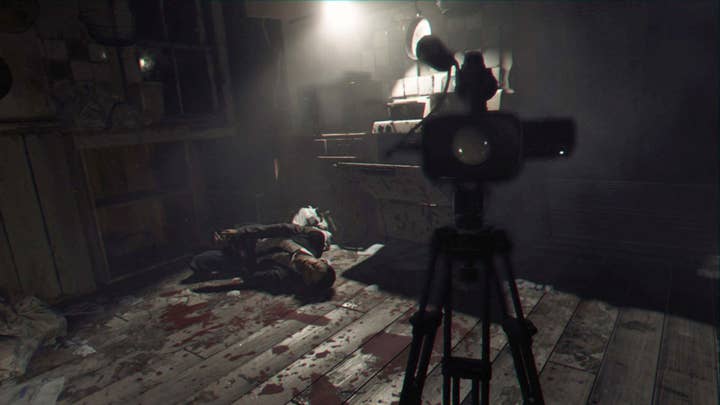
Why you should make a demo
- To help the community discover your game and give feedback
First and foremost, having a demo will help the gaming community to learn more about your game in a way a trailer can't, and allow you to reach a wider audience.
"With physical events cancelled for the foreseeable future, online demos may be the only way for a developer to provide the public an opportunity to play their game," Van Lepp says. "Sites such as itch.io provide opportunities for discoverability that can help people to find a demo."
"[For now], online demos may be the only way for a developer to provide the public an opportunity to play their game"Alex Van Lepp
Having a demo allows a developer or publisher to estimate how the final product will be perceived by its main audience, and receive feedback that they might not get otherwise. Gathering feedback is particularly important when your game deals with heavy topics, as is the case for Triple Topping's narrative-driven adventure Welcome to Elk.
"The end of our demo is a father getting killed in front of his family," explains co-founder Astrid Refstrup. "And knowing people's reaction to that so we could tailor how we describe this on the Steam page, how do we make sure we have good trigger warnings and so on -- that became very important."
- To use as a marketing tool to drive wishlists and visibility
A demo can positively affect the sales of your final product and its visibility -- it's a type of promotional content that can drive pre-orders significantly, as well as coveted Steam wishlist sign-ups.
"There is a positive correlation between demos and pre-orders and wishlists, but only when the players' experience with the demo is positive," Van Lepp says. "Demos that have technical issues or are too long may have a negative impact on wishlists. If you've managed to nail the demo experience, then you can expect to have an increase in wishlists. I've always timed [demos] with some sort of event and usually the wishlist numbers grow exponentially for the week that the demo is up. I suspect if you left a demo up all the time that it wouldn't really influence wishlists much.
"An early demo might prevent you from investing everything you got in making the wrong game"Michael Schade, Rockfish
"Demos can also increase your game's exposure and visibility, as gaming press and streamers can share your game with their audiences to drive traffic to your Steam page. One takeaway to keep in mind is that a high number of demo downloads and wishlists from demos may not convert to sales because of one key factor -- it's free. Many demos and free games are downloaded by people who have no intention of purchasing it, which is okay."
If you do get a high number of wishlist sign-ups, that then puts you in a better position to make a deal with a potential publisher or funding partner.
"Having a demo based on a polished prototype or solid vertical slice pre-release can boost wishlists significantly and help make a better game," Schade says. "Of course, the more wishlists the better your position to negotiate with other platforms and or publishers if needed. Plus, even if feedback is mixed or negative, an early demo might prevent you from investing everything you got in making the wrong game."

- To participate in events
While getting your game into the hands of players has always been essential, the lack of physical events this year has made the need for a demo even more crucial. It's likely events will retain some digital elements going forward, so you should consider having a playable slice of your game for these, as well as for events that have always been online-only.
"I think that the trend of [online] demo versions is coming back partly because of the current pandemic situation, so we as developers can't show our games publicly at live events like PAX, Gamescom, or E3," says Radosław Ratusznik, producer and lead designer at Ghostrunner developer One More Level. "So if you want to show the game, if you want to increase awareness, you have to prepare a demo for events such as the Steam Game Festival. This is your chance to get noticed by the gaming community."
"If you want to increase awareness, you have to prepare a demo for events such as the Steam Game Festival"Radosław Ratusznik, One More Level
Of course, having a demo for physical events whenever they return is also important, but for the time being the Steam Game Festival was the primary example mentioned by our interviewees as the type of event you want to be featured in. It's the best way to reach an audience beyond your initial target, and the condition for participation is to have a demo.
"To put this in perspective, Everspace 2 was prominently featured during both the Summer and Autumn Steam Game Festivals, clocking 100,000 demo downloads of 150,000 in total, with a staggering attach rate of 70% unique users as well as 74,000 gained wishlist balance out of 205,000 in total," Schade says. "We also managed to generate over a million organic views on YouTube through gameplay trailers and Let's Plays from several major content creators.
"We only have the wishlist data of the original Everspace that we can compare having an Everspace 2 demo to, but the numbers speak strongly: Everspace 2 is currently sitting at 1,200% more outstanding wishlists compared to when our first game launched on Steam back in September 2016, 38% of all gained wishlists can be directly allocated to being featured during the Summer and Autumn Edition Steam Game festival, and 63% have been gained since we released the demo."
Triple Topping also used the Welcome to Elk demo at events such as LudoNarraCon and the Steam Summer Game Festival. Refstrup says the latter gave the studio more wishlists than going to PAX.
"We used the same demo, streams, videos and approach. So in many ways it's been cheaper to do all the online events than going through the physical events, when there were still physical events."
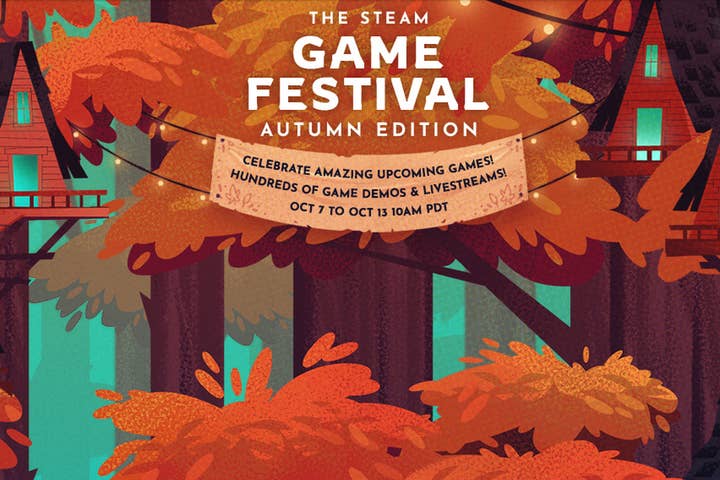
- To find funding
When you're looking for funding or a publishing partner, having a playable demo can be a useful tool. Triple Topping created the demo for Welcome to Elk before anything else, and its initial goal was to be used in pitch meetings.
"In lots of European countries, you can sometimes get public funding [for game development] but you need to show a prototype," Refstrup says. "There's a difference between a prototype and a demo -- a demo feels more like a complete product. But because of the nature of our game, Welcome to Elk, a prototype wasn't enough to illustrate exactly what the game is, the complexity of the story, and mini-games that we're using. So therefore a demo was a good option -- we ended up making a 15-minute version of a four-hour full game.
"If I had made a pitch deck, it wouldn't have really explained what the overall experience you're getting is"Astrid Refstrup, Triple Topping
"We used it both to get the public funding in Denmark, but also to pitch to Kowloon Nights and publishers. If I had made a pitch deck, it wouldn't have really explained what the overall experience you're getting is. So the [reasoning] was: if I can explain the experience you will have in 15 minutes, then I'm sure you would like to put some money into it, basically. I think especially now when you can't go meet people the same way, you need a different way of pitching -- both to consumers but also to partners."
- To onboard new team members
Lastly, a demo will make it much easier for you to explain to potential new recruits what they're getting into. It's particularly important for indie teams who work on smaller, less public, projects.
"[From an] internal perspective, having a demo is really good when you're onboarding new team members," Refstrup says. "It takes people 15 minutes and then they understand: okay, this is what the game is about, so let's start working on the full thing."

Why you shouldn't make a demo
- You don't have the resources
There are a few rare cases where making a demo might not be the best approach for your project. The main reason would be a lack of resources, whether human or monetary, meaning the demo wouldn't be able to meet the level of polish players will be expecting.
"It is important to check if you have adequate financial resources and time to release a refined product without affecting your development timeline," says Adam McGowan, marketing manager at Ghostrunner publisher All in Games. "If you're unable to refine the demo so that it matches with the quality you are aiming for, it may negatively impact fans reception and reduce your possible day one sales.
"The biggest sin would be to mislead players -- the demo should be representative of the final game"Adam McGowan, All in Games
"If, for whatever reason, you are aware that your demo will not live up to all players' expectations, take your time to refine the experience until it meets with expectations. Demos are not betas or early access games -- they are polished products that are close to the final game, but feature only a fraction of the overall game. The biggest sin would be to mislead players -- the demo should be representative of the final game.
"When planning a demo release, [remember that] the production cost [should be] included in the total project budget. You should write this into the development timeline so that it does not affect the work on the final game."
Ratusznik warns that you can only make first impressions once, so do not publish a demo unless you're ready to show your game publicly.
- If you are developing a short game
If you're working on a very short indie game, a demo might not be the best approach, though Triple Topping's Welcome to Elk proves that it can still work. You'll have to carefully consider what makes more sense for your project.
"A situation worth noting is the total playing time of the final product," says McGowan. "If you are developing a short game, releasing a demo for it may not be a good idea, because you can reveal too much, leaving little more attractions for players who want to buy the full version of the game."
You need to strike the right balance between getting people excited and revealing too much of the final product. Schade believes that the best fit is for titles that players can spend over 50+ hours in, with players being able to try out the core mechanics before release.
- If you want exclusivity partnerships with platforms or media
If you're hoping to get an exclusivity deal with a platform, it might work to your disadvantage to have a demo already published. And the same goes to media coverage to some extent, Van Lepp argues.
"I think there are a couple situations, the first being if you want to improve your chances of garnering media previews and streamer coverage. Once a demo is public, there is less incentive for media to play and write about it since it's not 'exclusive' to them. When I publish demos, I give media a couple weeks of exclusivity beforehand and then leverage the coverage for when the demos are public.
"Once a demo is public, there is less incentive for media to play and write about it"Alex Van Lepp
"The second would be if you are using the demo for potential partners. Maybe you don't want the public to try it yet, but you need to share it with potential partners (publishers, stores, first parties). I recommend in this case having the demo be private."
Having a demo on your Steam page and gathering wishlists as you're building up a community is just one approach, the other being to go straight to publishers and platform holders.
"You can go to the platforms and ask for exclusivity or other kinds of deals, to make sure that you have a profit before release, or at least a good foundation for it," Refstrup says. "And I think sometimes when approaching the platforms, it can be beneficial that you haven't launched a Steam page and there's no demo out because then you can be: hey if you really want this cool game, then you will be the first one to show it."
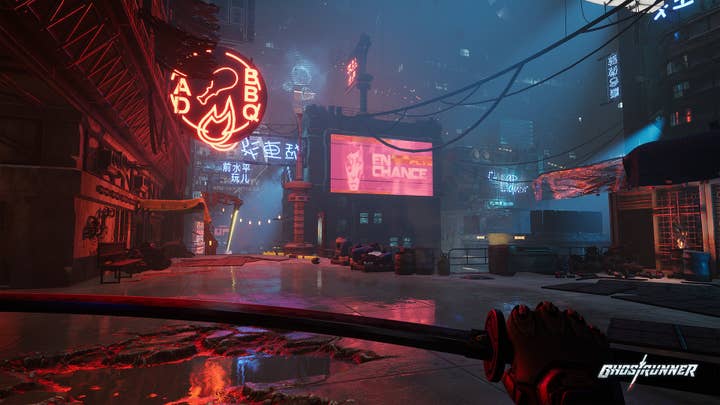
When to make your demo and when to release it
- Create your demo during the early stages of production
By now you should have a solid idea of whether making a demo makes sense for your project -- now you should figure out when to make it. The developers we talked to all agreed that the demo should be done as early as possible, as it's a great exercise to define the core pillars of your game and execute on that vision before going into full production.
"We did the demo before we did anything else," Refstrup says. "So before we had a script for the game and a design document, we made a mini script and a mini design document and created the demo. Then we used the demo in our overall design process, reminding ourselves: what kind of game are we doing?
"And then we didn't spend more time on it afterwards and we started focusing on creating the game. If you are a small team, trying to handle both at the same time can be quite stressful. I know a lot of teams struggle when there is an event [because] you need to find something in your build that can be actually played by others. So we saved a lot of time going to events because the demo was just there already."
"We used the demo in our overall design process, reminding ourselves: what kind of game are we doing?Astrid Refstrup, Triple Topping
Ratusznik adds that a good vertical slice in the early stages of production is the perfect candidate for your first demo.
"In my opinion, producing a demo shouldn't be a waste of resources," he continues. "Of course, there will be some additional work 'just for a demo', but you should minimise it as much as possible. It is crucial that you should be able to use as much of the content you produced for a demo in the final version of the game."
Van Lepp agrees that you shouldn't have to create new features specifically for a demo, and need to account for the demo production in your development schedule.
"I recommend working on a demo during alpha. By this point the game should have some solid sections that a developer can use for a demo without having to create new features. Developers will want to anticipate the need for a demo and build that into their schedule so that they can focus on it without interfering with the main game's development."
- When to release a demo depends on your goal
When to release your demo is a more contentious question, but it ultimately boils down to two options: before or after release.
"You can create a demo for a product before its release, and increase players' awareness around the game, collecting feedback from the community, building the community itself, and building sales forecasts for the game," McGowan says. "Or you can also release a demo after the game's premiere. It is always an additional asset that attracts players' attention. It provides them with the opportunity to test a game they have heard about, seen on the channels of their favorite influencers, or which is currently on sale."
Van Lepp advises to favour releasing a demo after the game's launch when it comes to consoles, as the process is a bit more arduous. But timing also depends on how big and complex your game is, with Schade saying that releasing your demo between three and twelve months before launch is about right for Steam.
"You can release a demo after the game's premiere [as] an additional asset that attracts players' attention"Adam McGowan, All in Games
"Otherwise it would be hard to keep up the momentum, unless your game is about a groundbreaking new experience for a die-hard and under-served fanbase," he explains.
Then comes the question of whether you want your demo to be available at all time until launch or only for a limited time. Van Lepp believes that having a demo on a storefront for limited periods of time prior to launch is a good strategy, as it makes the demo feel special and a team can devote this time to evaluate how the public is playing the game.
That's exactly what Triple Topping did with Welcome to Elk -- the demo was on Steam on and off for two years.
"We'd [head] to Steam so it could be a part of LudoNarraCon for example, and then we would take it down again," Refstrup says. "I know that other titles like Backbone had amazing success having a prologue or demo on Steam for free. We also did that for a few months, but I think if you really want to build a big community, you can have it out a year before.
"But you should be ready to start talking about the game. So that's also a balance -- you'll have to look at your team and be like: okay, are we ready to announce? And I think you should announce the game before you have the demo, so maybe you announce and then you wait a little bit, and then you start having a prologue or a demo on Steam."
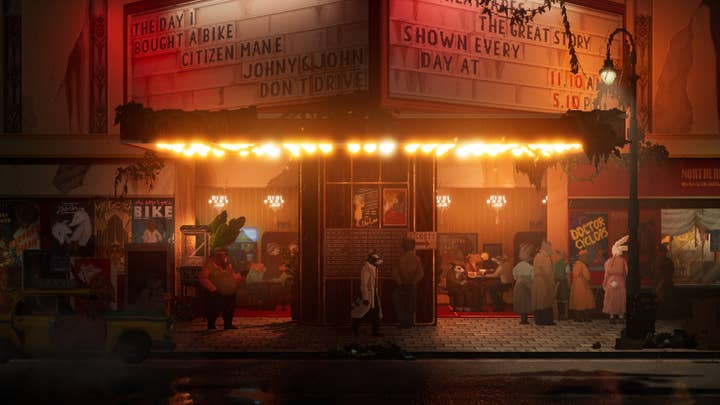
Storefront tips
If you want to make your demo available on storefronts, whether on PC or consoles, the developers we talked to had tips to share. Itch.io is a great platform to host demos, but it generally makes sense to put your demo on every store that is easy to deploy on.
"Generally, releasing a demo on stores involves exactly the same amount of work as releasing a full game," McGowan warns. "In the context of preparing graphic elements, descriptions, trailers, as well as the acceptance of the demo by stores itself, it is the same process."
Unsurprisingly, Van Lepp says the biggest results occur when the demo is hosted on Steam.
"That being said, developers cannot rely on getting featured so they'll need to work hard to promote the demo on social media, Reddit and so on," he says. "First, to list any application on Steam, you'll need to be a registered Steam developer and have paid the app registration fee. You must already have a store page set up and approved by Steam for the game, which must be listed as 'coming soon' in order to release a demo. This means your entire store presence must be complete and approved before you'll be allowed to release a demo."
"Releasing a demo on stores involves exactly the same amount of work as releasing a full game"Adam McGowan, All in Games
Since your game and its demo will have a separate Steamworks page, don't forget to connect the listings in the back end, so that the information about the demo is displayed. Otherwise, it won't be searchable in the store. To read more advice about good practices when setting up a Steam page, head to this GamesIndustry.biz Academy guide.
One thing that's important to note when it comes to demos on consoles is that each time you unpin a demo on consoles and reattach it, it will need to be re-accepted by the store, as in the case of a new product release. That's worth keeping in mind if you're planning on having your demo available on and off.
"Xbox requires creating a separate listing for the demo," McGowan continues. "[Like for Steam], all settings are a copy of the main game, and the same assets can be used. On Xbox, an alternative to the demo is to set a trial for the main game, for example free play for the first 30 minutes.
"On Playstation, you can create a demo game under the existing game concept. The demo will have its own separate store page, so you have to complete all the assets, as in the main game. The assets must be clearly different from those on the full game.
"Nintendo is the only platform that does not create a separate page for the demo. Therefore, no additional assets are needed to create it. The demo in the store appears as a button alongside the main game."
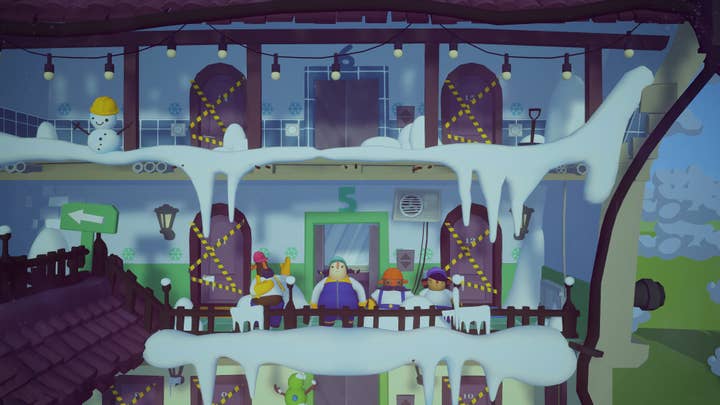
What's a good demo?
- A good demo is representative of the final game, quickly
When you start working on your demo, keep in mind that its most important feature should be that it's an accurate representation of what the final experience will be like.
That doesn't necessarily mean that your demo should be the beginning of your game. For All in Games' Tools Up, the demo included levels from the beginning of the title, that featured tutorials, and some levels from the end to give an overview of what to expect in the full game. Either way, make sure the demo gets into action quickly as players won't stay engaged if it takes too long to start.
"A demo needs to get players hooked within the first one or two minutes, or it is not a great demo"Michael Schade, Rockfish
"We made sure in the Everspace 2 demo that, after choosing one out of three spaceships featuring different capabilities and load outs, you will bump into an enemy outpost right after leaving the hangar," Schade says. "It literally takes less than 60 seconds from starting the demo to delving into your first dogfight. We strongly believe that a demo needs to get players hooked within the first one or two minutes, or it is not a great demo."
Showing players the bread and butter of your game within the very first minutes of gameplay and making it memorable is essential, and you can also go the extra mile and try to give them something to discuss or to compete over.
"In our case, it was a timer at the end of the demo which was the trigger for the players to share their times and improve their scores," Ratusznik says about Ghostrunner. "It was a bullseye for us because we got the attention of the speedrunning community thanks to that."
- A good demo keeps it to the point
Not only does your demo need to provide a representative sample of gameplay quickly, but it needs to do so in an impactful way -- keep convoluted mechanics out of it.
"I like to keep demos around 10 to 15 minutes, and the demo needs to have a high level of polish," Van Lepp says. "I recommend having a short tutorial to explain how to play the game and then go into a little bit more complex gameplay. Unless it is a narrative game, I also suggest keeping dialog to a minimum, because I've seen people quit playing games due to having to read too much text.
"I recommend staying away from dropping a player into a demo without any guidance. I also suggest staying away from including very late parts of the game that will be too tough for someone trying a game for the first time."
Refstrup adds: "I think it's important you keep it simple... If I had to do a strategy game, then I would maybe leave it to only the core loop. And maybe there's tons of upgradable systems and so on, but I would keep it to a minimum, because you want people to want more. So you need to show something that is fully working, a good core loop, but also not so complex that people wouldn't have time to grasp it if they were at an event and have only a short time.
"You need to show something that is fully working, a good core loopAstrid Refstrup, Triple Topping
"And especially if you're pitching to platforms, or publishers, or game funds, it needs to be something that is fastly communicated and we can easily see that maybe in six months you'll have added all of this extra content, and that makes it even more interesting."
McGowan says one hour is the maximum length your demo should be, as it will help "when leveraging support from influencers' in creating content for YouTube, Twitch or Facebook Gaming."
The exact length will depend on the size and complexity of our final product, though. For a game like Everspace 2, Schade says less than two hours of actual gameplay would be underwhelming for most players.
"You can 'beat' the Everspace 2 prototype in about two to four hours, which is about 5% to 10% of the story campaign in the final game. Since the prototype already has that open-world appeal we're aiming for, we have seen players clocking over 40 hours to max out their experience and brag about their achievements of having the most precious items, highest credit score, or the best racing time within our community."
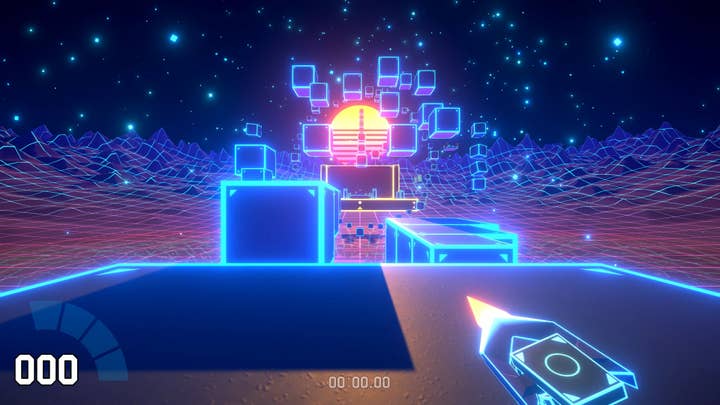
- A good demo has a high level of polish
The level of polish in your demo should be as close to final game quality as possible.
"Free demos attract a lot of players who don't read any demo description on the store page or in-game disclaimers," Schade says. "We received quite a few complaints about text-to-speech dialogues in the Everspace 2 prototype even though it reads 'temporary automated voice' in every dialogue box. Many players expect that everything works perfectly right out of the box because they think a demo is a snippet of the final game, so beware not only about using placeholders, but also about missing core features."
Refstrup says that the environment in Welcome to Elk evolved since the demo, but the team made sure it didn't look like placeholders: "It showed the final expectation you could have for the art style. The same goes for the content. It needs to feel a little unique, complete product."
- A good demo needs to leave players wanting more
Your demo needs to end in such a way that it doesn't feel like players have experienced everything the game has to offer.
"I think the 'less is more' rule is the best advice here," Ratusznik says. "The demo, after its finishing, should trigger a reaction: I want more, now. Short, but well polished -- that was also our approach with the Ghostrunner demo."
That's particularly important for narrative-driven games that need to give an accurate idea of where the story could go in the final product.
"For us it was important because the game has both very light humour and fun mini-games, and it has darker stories," Refstrup says. "[The demo] started fun and light because it drives the player on, and then in the end it ended with a very dark story. And I think that surprised a lot of players -- we deliberately wanted to end [the demo] on a surprise note because then it's like: okay, I want more of this. And no matter what kind of gameplay you have, I think you should end the demo on a point where it's like: I'm not done exploring this yet."









